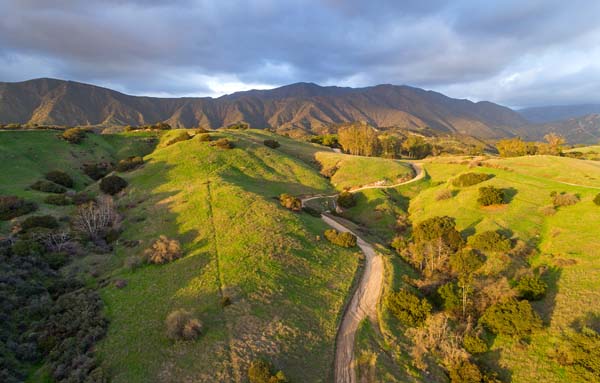If it’s not El Niño…what is it?

by Gary London for the COURIER
After years of punishing statewide drought, copious amounts of rain and snow are now blanketing California, from Los Angeles and San Diego to the far northern reaches of the Golden State.
What had been unsuccessfully predicted for the past two winters is now in full swing across not only California, but other areas of the western US as well. Of much interest to scientists and weather enthusiasts alike is what appears to be a notable contradiction between what is occurring in the atmosphere presently and what sea surface temperature data had led scientists to predict this winter.
Earlier predictions for this winter, based on sea temperature trends in the equatorial Pacific had strongly suggested a prevailing “La Niña” or generally dry winter weather pattern for California. This is based on sustained colder than water temperatures west of equatorial S
The term “Godzilla” El Niño had been quoted on numerous occasions by scientists studying oceanic trends along the equator west of South America just last winter. For unknown reasons, this potentially catastrophic event failed to materialize as predicted…seemingly until now.
While scientists are not yet dubbing our current weather pattern “El Niño,” those who are familiar with upper-level winds and pressure patterns will testify as to the uncannily strong resemblance between the present upper atmospheric flow configuration and that of the great historic El Niño events in the late 1970s and early ‘80s, most specifically 1982, the strongest El Niño on record.
The scientific connection between sea surface temperature abnormalities and upper level wind patterns began to be investigated and understood back in the mid 1970s through the work of the late Dr. Jerome Namias of the Scripps Institute of Oceanography near San Diego.
But the most interesting aspect of what is occurring presently statewide is that, while the atmosphere is screaming El Niño loud and clear, the equatorial Pacific continues to be colder than normal. It seems to defy explanation as to why storm after storm continue to follow a southerly track, with the two principle jet streams merging into one.
Only in the strongest El Niño events do the polar and subtropical jet streams join forces to pummel California, as they are doing now. Normally they are separated by a usually strong and present Pacific high pressure belt along and off the west coast, one jet driving north, the other being diverted to the south. Not this year.
This zone of fair weather bearing conditions has been split, one cell displaced to the south, the other “pinched off” (blocked) into the far northern Gulf of Alaska. As a result, a powerful, combined jet stream has a direct, unobstructed path clear across the Pacific from Asia, at low latitudes directly into California.
While it will require at least one or more consecutive El Niño type winters to officially end the California drought, one could easily surmise that a significant dent is currently being made in the long standing state-wide drought.
Latest reports from northern California reservoirs indicate levels are rapidly rising due to the recent rains and snow. Estimates place water increases at 350 billion gallons from recent storms.
According to the Mercury News in San Jose, “In a typical year, one ‘Northern Sierra eight-station index’ receives 50 inches of precipitation. As of Monday it was already at 40 inches—199 percent of the historic average for this date—and running slightly above 1982-83 and 1997-98, both of which were marked by severe El Niño flooding.”?Many state reservoirs are approaching their capacity and/or above 100 percent of their historic average for this date.
In the short term, present forecast models suggest a temporary break from present wet conditions locally beginning Friday, but longer-term projections suggest moisture laden-air from the Pacific could very well re-establish itself as a stable, ongoing force, especially during the two usually wettest winter months of January and February in California.










0 Comments